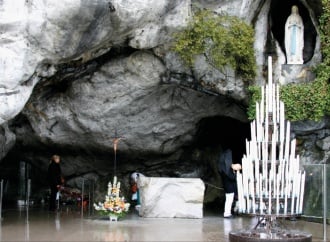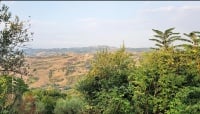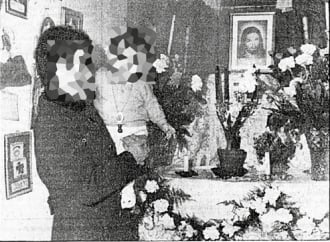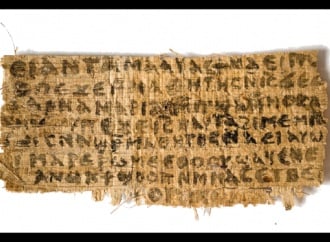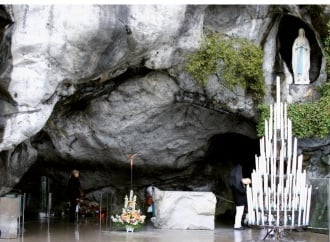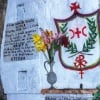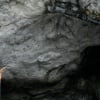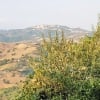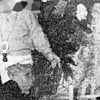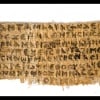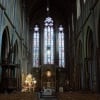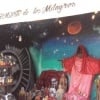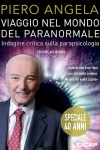- J. Soc. Psyc. Res., 61, 846 , 314 (1997) -
When testing psychic claimants, the need often arises to let the person take away some target material from the laboratory, in order to try to obtain a psi effect on it in his or her own home. Until a short time ago, the importance of using fool proof containers when conducting this kind of experiment was not fully recognized. Consider, for example, the naivety with which some parapsychologists have investigated the claimed PK powers of children and teenagers in the past[1]. Since children or teenagers were considered unable to cheat, they were all too readily left alone with target material - for example spoons or pieces of metal to bend - and then, when bends were found in them, psychic investigators immediately assumed that some kind of psychic force was at work. Further investigations have shown these suppositions to be wrong [2]and now stricter controls are (or should be) used in this kind of experiments.
One of the problems encountered has always been that of preparing "fool-proof" containers (e.g. bags, envelopes or boxes), that is containers which do not allow the psychic access to the item contained inside.[3] However, we believe that it is not so important to prevent access to the item (as would be the case with a steel safe), as it is to make sure that the container is "tamper-evident", i. e. prepared in such a way that any improper attempt to open it, could be easily detected. Special security items are now used to this end. The old sealing wax, for example, has been replaced by self-adhesive labels that can show signs of physical tampering, such as attempts to peel it off and the application of heat or solvents.
These strips also carry unique identification numbers, to prevent the container being opened and the strip being replaced by a duplicate one.[4]
We wish to report here on the investigation of a purported macro-PK case, in which an important role was played by a simple tamper-evident, home-made container. Debora Moscogiuri is a 22-year-old mystical seer living in Manduria (Taranto), in southern Italy. During ecstatic periods, she can supposedly see the Virgin Mary, and receive messages from her to Italian worshippers. Other phenomena are said to take place in and around the seer's home: for example, religious icons (pictures and statues) allegedly weep blood. None of these phenomena has been carefully investigated or documented however, nor have DNA tests been performed to ascertain the origin of the blood. In 1995 it was said that a statue of the Virgin Mary had started to drip olive oil. In addition, closed containers, such as small bottles or jars, left in the proximity of the statue were later found to be partially filled with oil. These had been tied with ribbons, taped, sealed with wax, and further sealed inside polythene bags. As requested by the claimant, some olive leaves were to be placed inside the bottles before sealing them. The phenomena produced by the young lady were also followed by Dr Gagliardi,[5] a physician from Milan (northern Italy), who prepared two such wax-sealed containers: one was kept in his office in Milan, a second identical one was sent to Manduria, and weeks later it was returned to him with some oil in it - and still sealed. Nothing had happened inside the jar in Milan. Realising that wax and tape sealing was inadequate, Dr Gagliardi contacted us asking for secure, "tamper-evident" containers.
We confirmed that the kind of seals he had used can be easily opened and later replaced.[6] Therefore, we prepared a set of sealed test tubes as follows:
It turned out that: i) One of the eight tubes (No 3) was missing. ii) Tubes No 1, 2 and 7 were intact and did not contain any liquid. iii) Tube No 4 had a broken tip that had produced a small gap; no liquid was present. iv) Tubes No 6, 8 and 10 did contain a yellow viscous liquid. A comparison with the photographs of the original showed that the tips had been melted and re-sealed. The shape of the tips was quite clearly different. One of the tubes had been tampered with on the side, and the glass was deformed leaving a large bubble. One tip was also slightly cracked. In all of these three phials there were traces of a black substance, and the leaf was partially or completely carbonised.
We deemed evident that some crude tampering had occurred, and that this was indicative not of a miracle but, on the contrary, of some sort of fraud carried out by somebody in Miss D. M.'s group. Fr. Civerra's reaction was different: he did not accept such a conclusion, claiming that he placed more trust in his own external wax seals, and that if the tubes were deformed it had been due to the "Holy Ghost's flame" in D. M.'s vision. In conclusion, we believe that these flame-sealed glass test tubes - with these few simple control procedures - can be a useful tool in the hands of researchers testing psi abilities, in particular macro PK or clairvoyance.
Luigi Garlaschelli
Dept. Organic Chemistry, University of Pavia - Via Taramelli 10 - 27100 Pavia, Italy
Investigative Researcher of CICAP (Comitato Italiano per il Controllo delle Affermazioni sul Paranormale - Italian Committee for the Investigations of Claims of the Paranormal)
Massimo Polidoro
CICAP - P.O. Box 60 - 27058 Voghera (PV)
Investigative Researcher of CICAP, editor of Scienza & Paranormale and European representative for the James Randi Educational Foundation.
INTRODUCTION
When testing psychic claimants, the need often arises to let the person take away some target material from the laboratory, in order to try to obtain a psi effect on it in his or her own home. Until a short time ago, the importance of using fool proof containers when conducting this kind of experiment was not fully recognized. Consider, for example, the naivety with which some parapsychologists have investigated the claimed PK powers of children and teenagers in the past[1]. Since children or teenagers were considered unable to cheat, they were all too readily left alone with target material - for example spoons or pieces of metal to bend - and then, when bends were found in them, psychic investigators immediately assumed that some kind of psychic force was at work. Further investigations have shown these suppositions to be wrong [2]and now stricter controls are (or should be) used in this kind of experiments.
One of the problems encountered has always been that of preparing "fool-proof" containers (e.g. bags, envelopes or boxes), that is containers which do not allow the psychic access to the item contained inside.[3] However, we believe that it is not so important to prevent access to the item (as would be the case with a steel safe), as it is to make sure that the container is "tamper-evident", i. e. prepared in such a way that any improper attempt to open it, could be easily detected. Special security items are now used to this end. The old sealing wax, for example, has been replaced by self-adhesive labels that can show signs of physical tampering, such as attempts to peel it off and the application of heat or solvents.
These strips also carry unique identification numbers, to prevent the container being opened and the strip being replaced by a duplicate one.[4]
EXPERIMENTAL SUBJECT
We wish to report here on the investigation of a purported macro-PK case, in which an important role was played by a simple tamper-evident, home-made container. Debora Moscogiuri is a 22-year-old mystical seer living in Manduria (Taranto), in southern Italy. During ecstatic periods, she can supposedly see the Virgin Mary, and receive messages from her to Italian worshippers. Other phenomena are said to take place in and around the seer's home: for example, religious icons (pictures and statues) allegedly weep blood. None of these phenomena has been carefully investigated or documented however, nor have DNA tests been performed to ascertain the origin of the blood. In 1995 it was said that a statue of the Virgin Mary had started to drip olive oil. In addition, closed containers, such as small bottles or jars, left in the proximity of the statue were later found to be partially filled with oil. These had been tied with ribbons, taped, sealed with wax, and further sealed inside polythene bags. As requested by the claimant, some olive leaves were to be placed inside the bottles before sealing them. The phenomena produced by the young lady were also followed by Dr Gagliardi,[5] a physician from Milan (northern Italy), who prepared two such wax-sealed containers: one was kept in his office in Milan, a second identical one was sent to Manduria, and weeks later it was returned to him with some oil in it - and still sealed. Nothing had happened inside the jar in Milan. Realising that wax and tape sealing was inadequate, Dr Gagliardi contacted us asking for secure, "tamper-evident" containers.
METHODOLOGY
We confirmed that the kind of seals he had used can be easily opened and later replaced.[6] Therefore, we prepared a set of sealed test tubes as follows:
a) An olive leaf was put into each glass test tube.(It was noticed that when these tubes were slightly heated, a few tiny droplets of water were given off by the leaf inside. The general look was quite different from that of oil, the total weight of course did not change, and the droplets were re-absorbed after a few days. Thus we decided not to worry about this detail.) Each tube could now be identified by its weight and photograph, and was "tamper-evident", as there is no way that glass can be melted and resealed exactly in its original shape. Eight of these phials (numbered 1, 2, 3, 4, 6, 7, 8, 10) were delivered to Miss D. M. through Dr Gagliardi and Father Civerra, a catholic priest who follows the seer. We had no idea of the whereabouts of the sealed tubes, nor about what was happening to them at the other end of Italy. Two noticeable events followed: we received a fax from Fr. Civerra, wherein D. M. reported a mystical vision of the Blessed Virgin: a large tongue of flame (of the Holy Ghost) had approached the tubes, taking one of them away and leaving just seven (the number of the Virgin's sorrows). Later, rumour was heard that some of our tubes contained oil. So, again through the intermediacy of Dr Gagliardi and Fr. Civerra, we managed to have our tubes back to be checked. The meeting was attended by Fr. Civerra and Dr Gagliardi, videotaped, and a statement of the results was then signed by all participants. Fr. Civerra had put the tubes we had prepared into a jar and then into a plastic bag; each of these containers had been wax-sealed. For the reasons given above, we disregarded these extra security measures, and requested that only our tubes be taken out and checked. It should be noted that, when asked, Fr. Civerra admitted that he had no way of verifying whether his wax seals had been tampered with and replaced.
b) The tubes were flame-sealed on a Bunsen burner, taking care not to scorch the leaf inside.
c) Each tube was numbered in several positions using a vibrating glass-etching instrument.
d) Each tube was checked for invisible gaps by holding it under water; in such conditions small air bubbles would escape from those imperfectly sealed.
e) The tubes were weighed on a precision lab balance (tared just prior to this operation), recording all digits with a milligram precision.
f) Each tube was then photographed with additional close-up lenses, in such a way as to record the etched number, and the shape of the sealed tip, where the glass had been melted.
RESULTS
It turned out that: i) One of the eight tubes (No 3) was missing. ii) Tubes No 1, 2 and 7 were intact and did not contain any liquid. iii) Tube No 4 had a broken tip that had produced a small gap; no liquid was present. iv) Tubes No 6, 8 and 10 did contain a yellow viscous liquid. A comparison with the photographs of the original showed that the tips had been melted and re-sealed. The shape of the tips was quite clearly different. One of the tubes had been tampered with on the side, and the glass was deformed leaving a large bubble. One tip was also slightly cracked. In all of these three phials there were traces of a black substance, and the leaf was partially or completely carbonised.
CONCLUSIONS
We deemed evident that some crude tampering had occurred, and that this was indicative not of a miracle but, on the contrary, of some sort of fraud carried out by somebody in Miss D. M.'s group. Fr. Civerra's reaction was different: he did not accept such a conclusion, claiming that he placed more trust in his own external wax seals, and that if the tubes were deformed it had been due to the "Holy Ghost's flame" in D. M.'s vision. In conclusion, we believe that these flame-sealed glass test tubes - with these few simple control procedures - can be a useful tool in the hands of researchers testing psi abilities, in particular macro PK or clairvoyance.
References and Notes
1) a) Taylor, John. Superminds. The Viking Press. 1975
b) Hasted, J. B. The Metal Benders. London: Routledge and Kegan Paul. 1981.
b) Hasted, J. B. The Metal Benders. London: Routledge and Kegan Paul. 1981.
2) a) Hanlon, John. But what about children? New Scientist, June 5. 1975
b) Randi, James. Flim flam! Prometheus Books. 1982.
b) Randi, James. Flim flam! Prometheus Books. 1982.
3) Besterman T., Soal S.G. and Jephson, I.. Report on a series of experiments in clairvoyance conducted at a distance under approximately fraud-proof conditions. Proceedings of the SPR, 39:375-414; quoted in: A Skeptic's Handbook of Parpsychology, ed. Paul Kurtz, pag. 102
4) R. Wiseman and R. Morris. Guidelines for testing psychic claimants. University of Hertfordshire Press, p. 72, and references cited therein. 1995
5) Dr Gagliardi is a member of the "Centro studi e ricerche sulla psicofisiologia degli stati di coscienza", Via Villoresi 5 - 20143 Milano (Italy)
6) J. M. Harrison, Ed. CIA Flaps and Seal Manual, Paladin Press, 1975
Luigi Garlaschelli
Dept. Organic Chemistry, University of Pavia - Via Taramelli 10 - 27100 Pavia, Italy
Investigative Researcher of CICAP (Comitato Italiano per il Controllo delle Affermazioni sul Paranormale - Italian Committee for the Investigations of Claims of the Paranormal)
Massimo Polidoro
CICAP - P.O. Box 60 - 27058 Voghera (PV)
Investigative Researcher of CICAP, editor of Scienza & Paranormale and European representative for the James Randi Educational Foundation.


